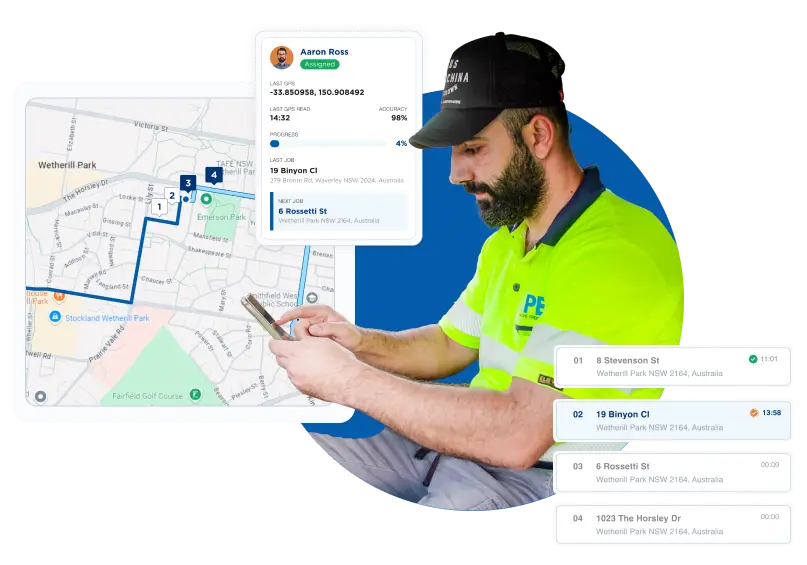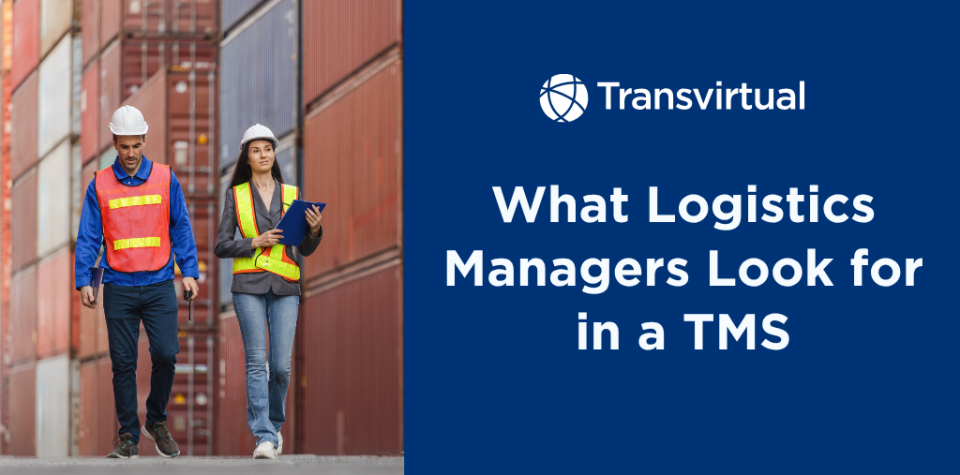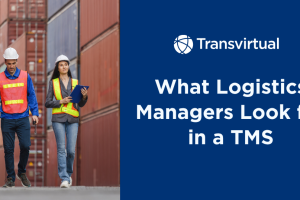Logistics in 2025 is faster, leaner, and more demanding than ever. Logistics managers face constant pressure to do more with less. Logistics managers need to streamline operations, control costs, maintain accuracy, and deliver on time, every time. Balancing these demands while maintaining visibility and compliance isn’t easy. The necessity for tools to make smarter, faster decisions that keep goods moving and customers satisfied has never been more crucial. That makes a Transport Management System (TMS) the perfect day-to-day companion for every logistics manager and successful transport business.
TMS Features: What Top Logistics Managers Look for in a Transport Management System
Order processing and inventory management
Automated order entry in a TMS reduces manual errors and accurately records every shipment detail. Synchronizing inventory across warehouses and channels improves accurate stock management and prevents costly under- or over-stocking.
Route Optimisation
Route optimisation uses live traffic data and mapping technology to plan the most efficient routes possible. It not only shortens travel time but also reduces fuel consumption and emissions, supporting cost efficiency and sustainability goals. More efficient routes mean better on-time performance and happier clients.
Real-time visibility and tracking
Visibility is absolutely non-negotiable in logistics. A good TMS offers real-time tracking for every consignment, giving managers and customers a live view of where their shipments are. Instant updates mean teams can address issues before they escalate, improving communication and reliability.
Load planning
Smart load planning tools help logistics managers maximise truck or container capacity while ensuring safety and compliance. Optimising how freight is loaded reduces wasted space, lowers transport costs, and cuts down on unnecessary trips. It also helps prevent damage and delays, ensuring goods arrive in top condition.
Carrier management
Finding reliable carriers shouldn’t be guesswork. Carrier management features let you compare rates, evaluate performance, and assign jobs with confidence. It streamlines communication, ensures transparency, and strengthens partnerships with dependable transport providers.
Compliance tools
Keeping up with changing transport, safety, and environmental regulations is challenging. Built-in compliance tools help by automatically generating necessary documents, monitoring regulatory updates, and checking shipments against required standards. From dangerous goods declarations to vehicle maintenance logs, these features keep all records organised and up-to-date. Automated compliance reduces the risk of fines, delays, and gaps, and makes audits easier to manage for logistics managers.
Analytics and reporting
Data is the new currency in logistics. Advanced reporting tools turn raw shipment data into actionable insights. Managers can track KPIs like cost per delivery and DIFOT performance, so they can plan data-driven strategies. Over time, these insights drive continuous improvement and uncover hidden efficiencies.
Mobile access via app
With mobile access, managers and drivers can stay connected on the go. Real-time updates, electronic proof of delivery (ePOD), and route adjustments can all be managed from a smartphone or tablet. This level of flexibility boosts coordination, reduces downtime, and keeps the entire supply chain moving smoothly anytime and anywhere.
Seamless integrations
The best systems integrate easily with ERPs, warehouse management tools, ecommerce platforms, and accounting software. This connectivity keeps data centralised, consistent, and accessible across departments.
TMS Features: What Top Logistics Managers Look for in a Transport Management System
| Role | Key Responsibilities | TMS Features | How It Helps |
|---|---|---|---|
| Operations Manager | Oversee daily transport operations | Order Processing, Load Planning, Route Optimisation | Ensures smooth workflows, fewer delays, and better resource use |
| Compliance Officer | Maintain legal and safety compliance | Compliance Tools, Analytics | Tracks documents, ensures standards, and reduces non-compliance risks |
| Customer Service Manager | Handle delivery updates and issue resolution | Real-Time Visibility, Mobile Access | Keeps customers informed and improves satisfaction |
| Procurement/Carrier Manager | Manage transport partners and negotiate rates | Carrier Management, Reporting | Identifies best carriers and optimises costs |
Why Transvirtual TMS is Trusted by Logistics Managers

"We found that service offering from Transvirtual far outweighed anything that any other provider was offering. One of the key benefits of using Transvirtual is it provides our staff, network, and customers with total visibility from pickup to delivery. It also enables our customer service team to run more efficiently and provide a highly responsive service."

VT Freight Express
Frequently Asked Questions
A logistics manager keeps the supply chain running smoothly. They coordinate how goods move from suppliers to customers, manage transport schedules, and select reliable carriers. Beyond that, they ensure compliance with regulations, track performance, and look for ways to make every delivery faster, more cost-effective, and more accurate.
A Transport Management System (TMS) brings structure and visibility to your logistics operations. It:
Automates repetitive tasks to reduce manual work and errors
Optimises routes and loads to lower transport costs
Provides real-time visibility so you can track every shipment
Improves customer service with on-time, transparent deliveries
Choosing the right TMS starts with understanding your business needs.
Assess your operations: Identify where you need automation or better visibility.
Check scalability: Make sure the software can grow with your business.
Test usability: A user-friendly interface saves time during training.
Ensure integration: The system should connect easily with your existing tools.
Evaluate support: Choose a provider with responsive local support and regular updates.
Schedule a free strategy session
Talk to our team! Let’s discuss your top logistics problems and find out if Transvirtual has the solution you need.


